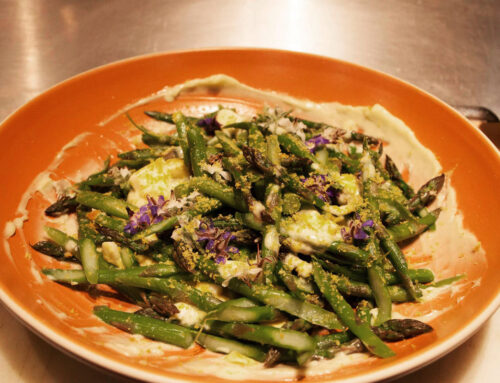EVENT DATE: JANUARY 18th, 2016
The region and its flavors
I created this feast (listed in full below) in partnership with talented Venetian chef, Michele Bevilacqua, who helped me create a menu of exciting and unique ingredients and flavors which are specific to the region. As a maritime trading port, fish is important to Venice, and took center stage on my menu with octopus, squid ink, cuttlefish, and stockfish—which has an interesting history.
Let’s explore the history of a few ingredients on the menu…
In 1431, Pietro Querini’s merchant ship was bound for Bruges, Belgium, when it encountered a storm off France’s west coast. As the ship was ravaged by gales and massive waves, its sailors fled to lifeboats, fighting the blustery weather for weeks. In January 1432, the ship’s few survivors were found by fishermen on the Norwegian archipelago of Lofoten, where they spent three months before returning to Venice. The sailors learned to subsist on stockfish, which Norwegians have prepared since 875 A.D., by drying a white fish in cold air near the water, and fermenting it similar to the maturing process of cheese. The crew brought it back to Venice, where it now takes center stage in many Venetian homes and restaurants.
While stockfish has a taste very similar to salt cod, it also has specific flavor notes, and a distinct smell, which salt cod does not have. When the box of fish was delivered from Norway to my storage unit, the building manager called me in a fluster asking me to please remove the fish as soon as possible. No matter how it may smell, its taste is incredible.
Another unique ingredient from the evening was radicchio Treviso, which I’m guessing you’ve never heard of. This beautiful chicory is actually quite popular throughout the U.S. However, authentic Radicchio Rosso di Teviso IGP-Tardivo is grown only in the Italian provinces of Treviso, Padua, and Venice, by a traditional forcing and blanching method, which affects the growth pattern and color of the chicory relative immediately after harvest. After about two weeks (once new heads have appeared on the plants), they are cut, washed, and packaged. I found a local farmer who grows Tardivo, and although they weren’t be authentic IGP, they were as beautiful and delicious as any found in Italy.
- CLICK FOR LARGE DISPLAY






